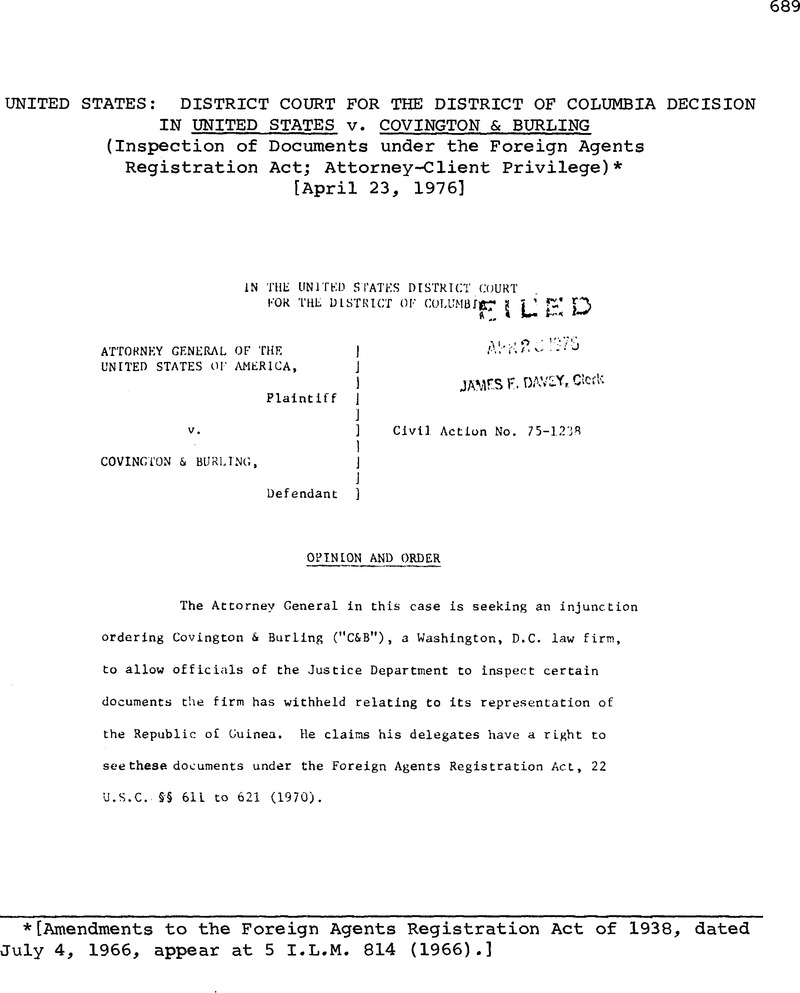No CrossRef data available.
Article contents
United States: District Court for the District of Columbia Decision in United States v. Covington & Burling (Inspection of Documents under the Foreign Agents Registration Act; Attorney-Client Privilege)*
Published online by Cambridge University Press: 04 April 2017
Abstract

- Type
- Judicial and Similar Proceedings
- Information
- Copyright
- Copyright © American Society of International Law 1976
Footnotes
[Amendments to the Foreign Agents Registration Act of 1938, dated July 4, 1966, appear at 5 I.L.M. 814 (1966).]
References
1/ C & B has given two other reasons for withholding these documents:
(1) that it only registered under the Act out of an abundance of caution and is not really subject to it at all; (2) and that none of the documents relate to an activity for which registration is required, and the Act therefore does not require disclosure ot them. For purposes of argument, however, the firm is willing to have it assumed that both these arguments have failed.
2/ The Attorney General has also suggested that, even if the privilege should exist under the Act, it may have been waived by the client. The Court has found nothing in the record, however, to support this possibility.
3/ The Court can at least hypothecate a situation where these two interests .would be locked in unresolvable conflict. See Attorney General v. Irish Northern Aid Committee, 346 F.Supp. 1354 (S.D.N.Y.), aff'd mem.,465 F.2d 1405 (2d Cir.), cert, denied 409 U.S. 1080 (1972). But that question need not be decided now. Compiled from UN Doc. A/CN.9/IX/CRP.4/Add.l, as amended (see A/CN.9/SR.178).


